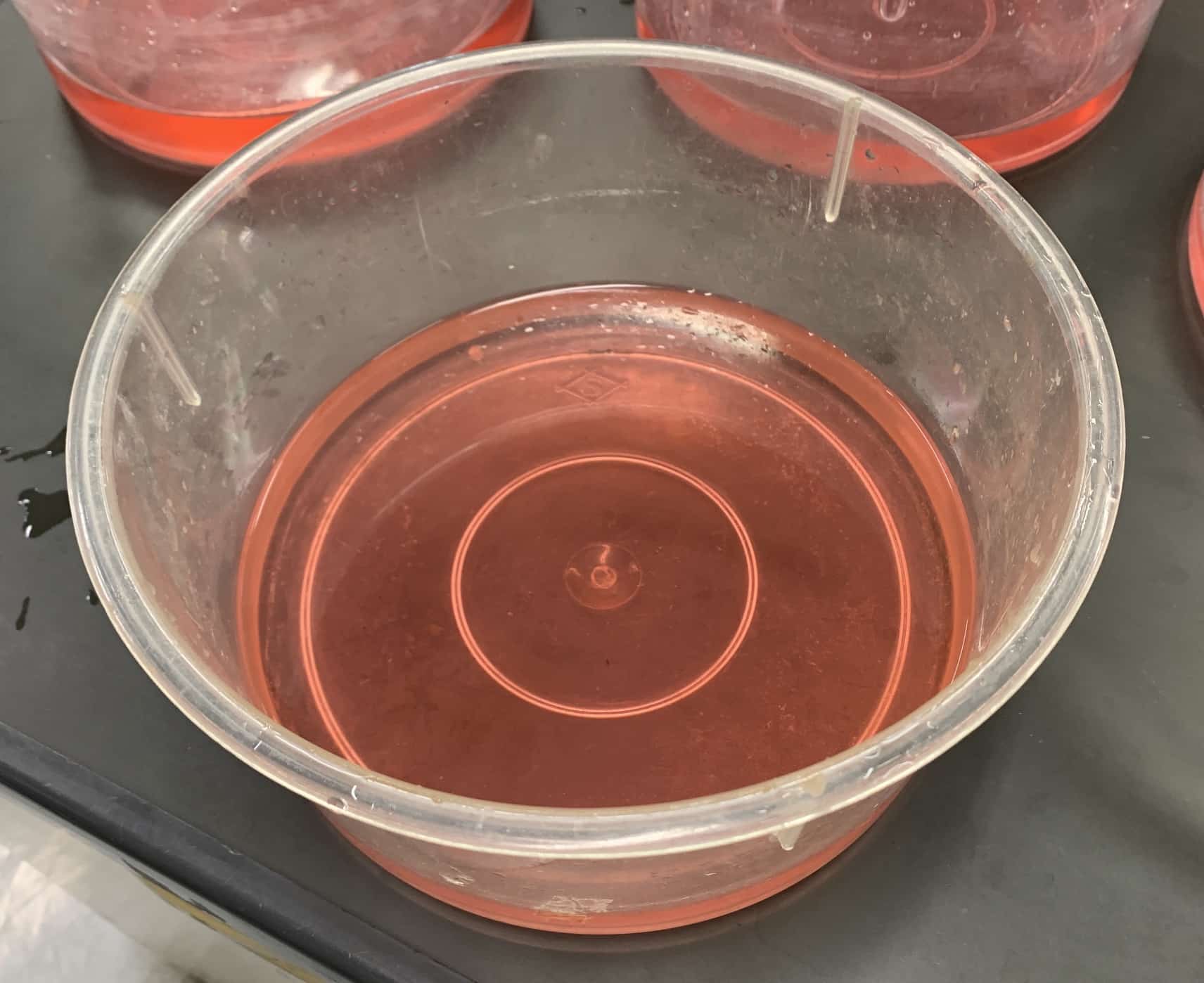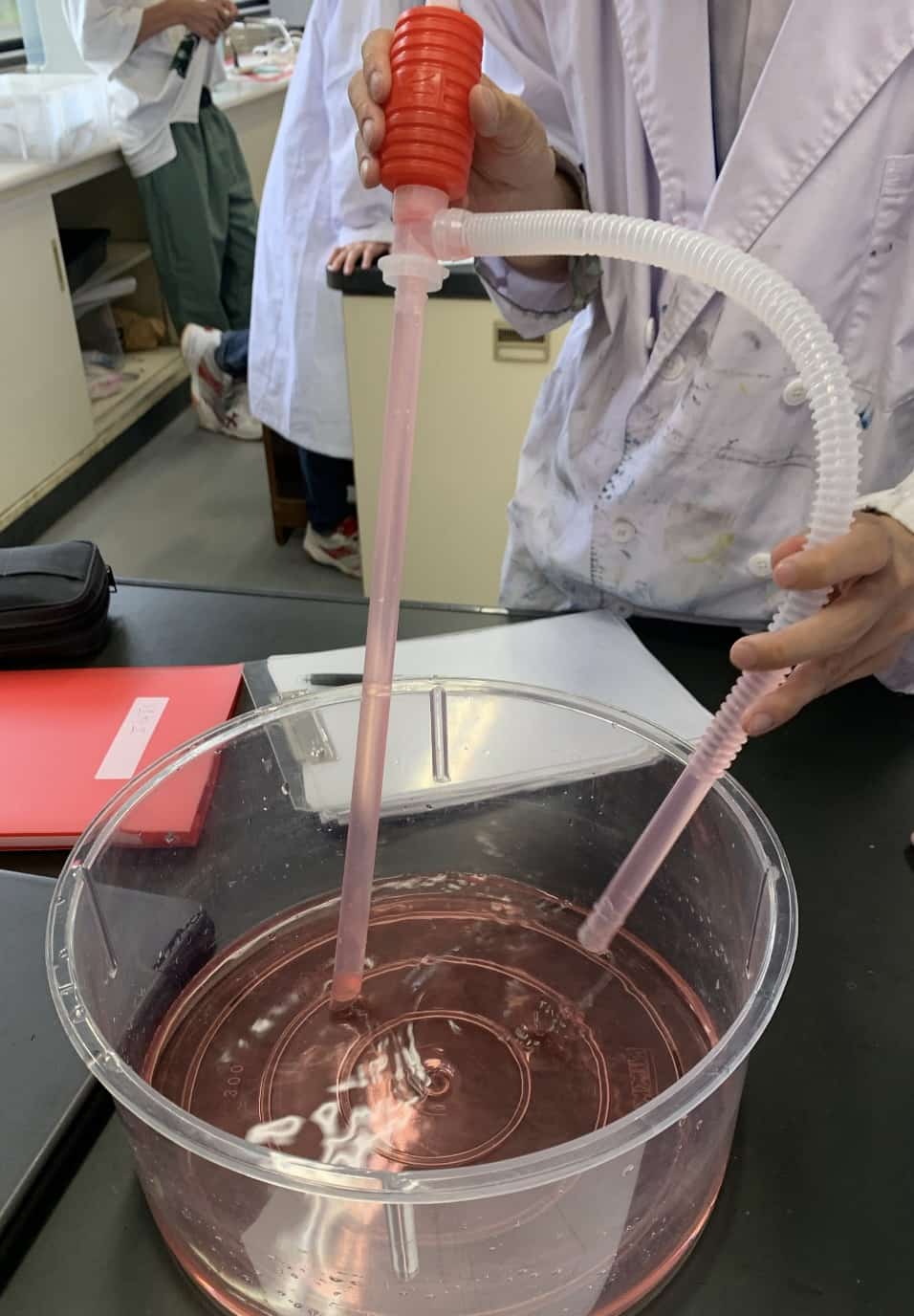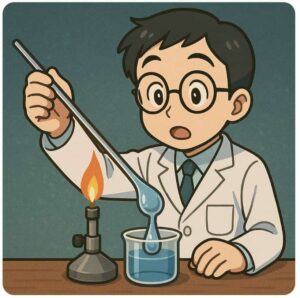From Kerosene Pump to Beating Heart! Hands-On Science Class to Feel the Cardiac Mechanism
I’m Ken Kuwako, a science trainer. Every day is an experiment!
“Thump-thump, thump-thump…” Can you imagine this small organ, your heart, working tirelessly inside your chest, pumping an amount of blood equivalent to about 40 oil drums throughout your body in a single day? Yet, many middle school students find it hard to grasp what they learn in textbooks, like “the heart has four chambers and ‘valves’ that prevent blood from flowing backward.”
This is where experiments come in! You can actually use a common household item to experience the intricate mechanism of this life-pumping organ for yourself. Today, I’m going to introduce a heart model experiment using a kerosene pump that I developed with a student teacher.
Why Does Blood Only Go One Way? Solve the Mystery with a Common Tool!
One day, a student teacher came to me for advice, asking, “How can I make my students truly understand the role of the heart’s ‘valves’?” She felt that simply showing diagrams or videos from a textbook wasn’t sparking their curiosity.
So we came up with an idea: using a kerosene pump as a model for the heart. The key was the tiny “valve” inside the pump. This was the key to understanding how the heart works.
Experiment Prep: Build a Life Pump from a 100-Yen Shop
The materials are very simple and can be easily found at home or at a 100-yen shop.
【Materials Needed】
- Kerosene pump (2 types):
- One with the internal valve removed
- One with the valve left intact
- Water and red food coloring (to make red “blood” water)

- Clear beakers or containers (to easily observe the flow of “blood”)
- A tray or towel (to protect your desk from getting wet)
【Experiment Steps】
First, prepare your “blood water” by adding red food coloring to water in a container. Then, observe what happens when you operate the pump with the valve removed. → When you push and pull the pump, the water goes in and out from both hoses… This wouldn’t allow blood to circulate throughout the body. Next, try the same operation with a regular pump that has its valve intact.
→ To your amazement, the water is powerfully pumped in a single direction. There is absolutely no backflow. This is the “flow of life” that delivers oxygen and nutrients to your entire body!

Feel It to Know It! The “Valve” is the Heart’s Hero
The greatest appeal of this experiment is the discovery that “Oh, without this valve, blood couldn’t circulate!”—a realization that comes from experience, not just theory. The water that just moved back and forth with the valve-less pump suddenly creates a powerful flow with the valve intact. Witnessing this dramatic difference, you naturally come to the conclusion, “That’s why the heart needs valves!” The student teacher who came to me was also beaming, saying, “The true meaning of the heart’s valves finally clicked for me!” Inside our own bodies, valves working just like this pump open and close accurately about 100,000 times a day, keeping the rhythm of life. The seed of scientific wonder is hidden in such everyday tools.
【Pro-Tip】Choosing the Right Pump for a Successful Experiment
There’s a small trick to choosing the pump for this experiment. Products from a 100-yen shop are perfectly fine, but the visibility of the valve can vary by manufacturer.
Seria’s pump: The valve is colored red, making its movement easy to see and perfect for observation.
Daiso’s pump: The valve is often clear, which might make it a little harder to see.
If you have a choice at the store, be sure to peek inside the pump and check the color of the valve. The fun of science isn’t just about memorizing knowledge. Its true essence lies in the moment you explore a “why?” using everyday things and have that “Aha!” moment. I hope you’ll experience this excitement at home or in class!
Contact and Requests
Making the wonders and fun of science more accessible! I’ve put together easy-to-understand explanations of fun science experiments you can do at home and the tips for them. Feel free to search for more!
・About the operator, Ken Kuwako, click here
・For various requests (writing, lectures, experiment classes, TV supervision, appearances, etc.), click here
・Article updates are delivered on X!
![]() The Science Channel is streaming experiment videos!
The Science Channel is streaming experiment videos!


